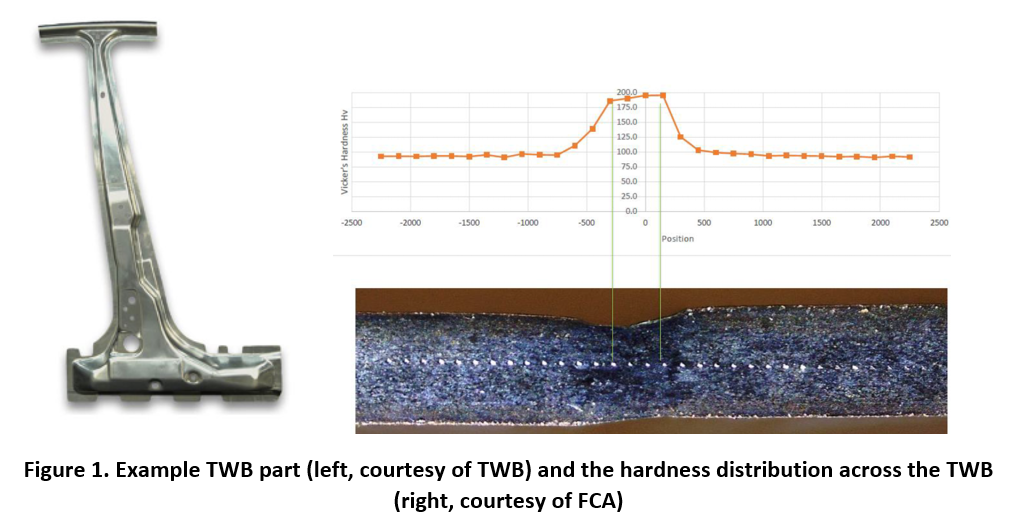
Laser welded blanks (LWBs) are produced by laser welding two sheet materials together, typically prior to a forming process. The sheet materials can be identical or dissimilar depending on the application. The LWB process allows the designer to ‘tailor’ the location of the desired material properties in the blank for crashworthiness and lightweighting. LWB technology was introduced in the US automotive industry in the early 1990s and it has been widely used in automotive body structures such as door inner panels, fenders, roof stiffeners, and pillar stiffeners (Figure 1). The application can also be used for hot-stamping of multi-strength sheet materials.

The behaviors of a laser welded blank during forming are significantly influenced by blank conditions such as thickness variation and the strength ratio of the two materials, as well as the weld quality. These conditions can cause variation in the local formability of the weld area, making the numerical simulation of forming LWBs more complicated than simulation of monolithic sheets. Unfortunately, the local formability of the LWB weld area is often over-simplified in forming simulations. The base material properties are simulated in the weld area, which completely neglects the heat affected zone (HAZ) and weld properties. Using this method on certain steels has been reasonably effective due to the weld and HAZ being stronger than the base metal, forcing necking failures to occur in the thinner or softer base metal away from the weld area (Figure 1).
Third generation advanced high strength steels (GEN3 AHSS) have not shown a trend similar to previous generations. Instead, fractures in the weld and HAZ are observed more often with GEN3 steels than the conventional steels. When the over-simplified simulation method is used on these materials, the physical results do not correlate well with simulation. This can cause costly design changes and production delays.
If designers can better predict the formability and unique behaviors of GEN3 AHSS (and other material) LWBs during forming, many costly design changes and production issues could be avoided. To address this emerging challenge in predicting local failure in welds and HAZs during the forming of LWBs, the EWI Forming Center is working with industry partners to develop a LWB forming prediction model with an emphasis on GEN3 steels.
To learn more about this work, contact [email protected].